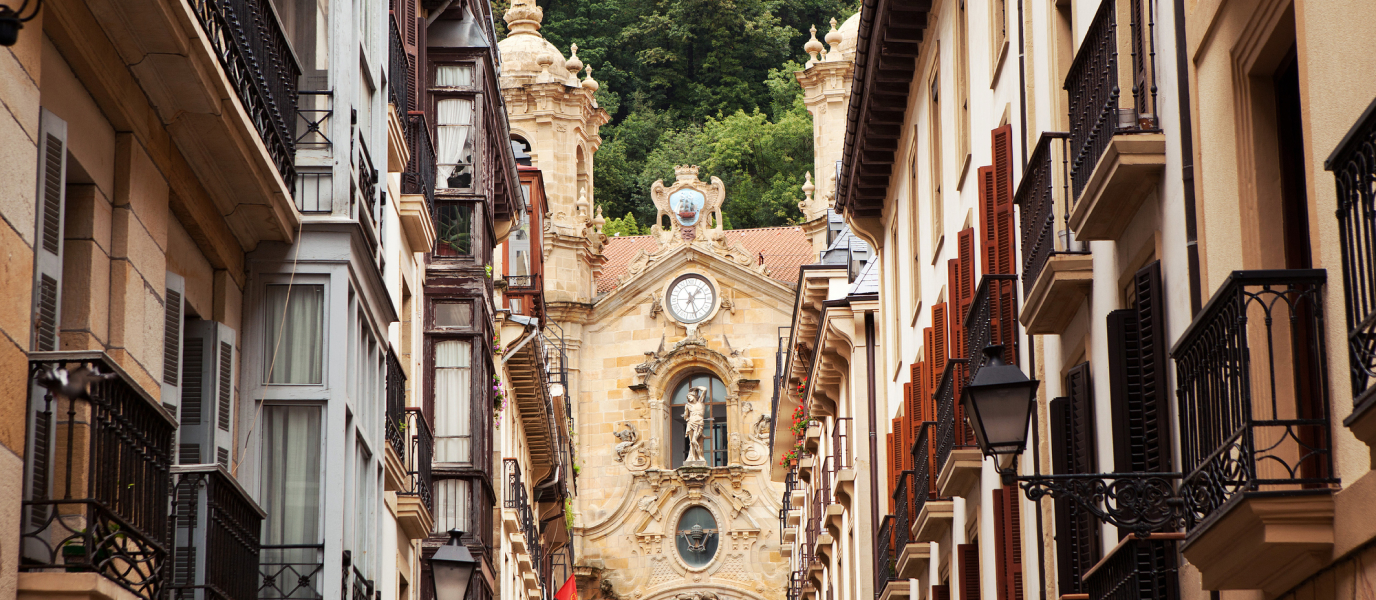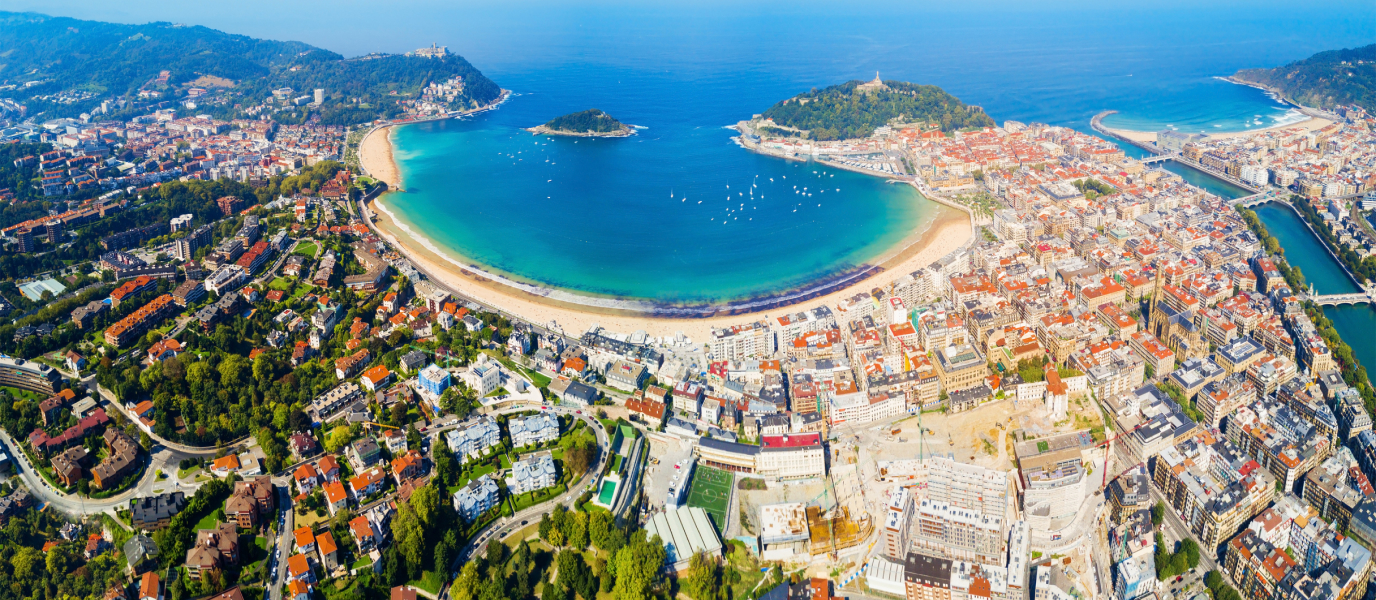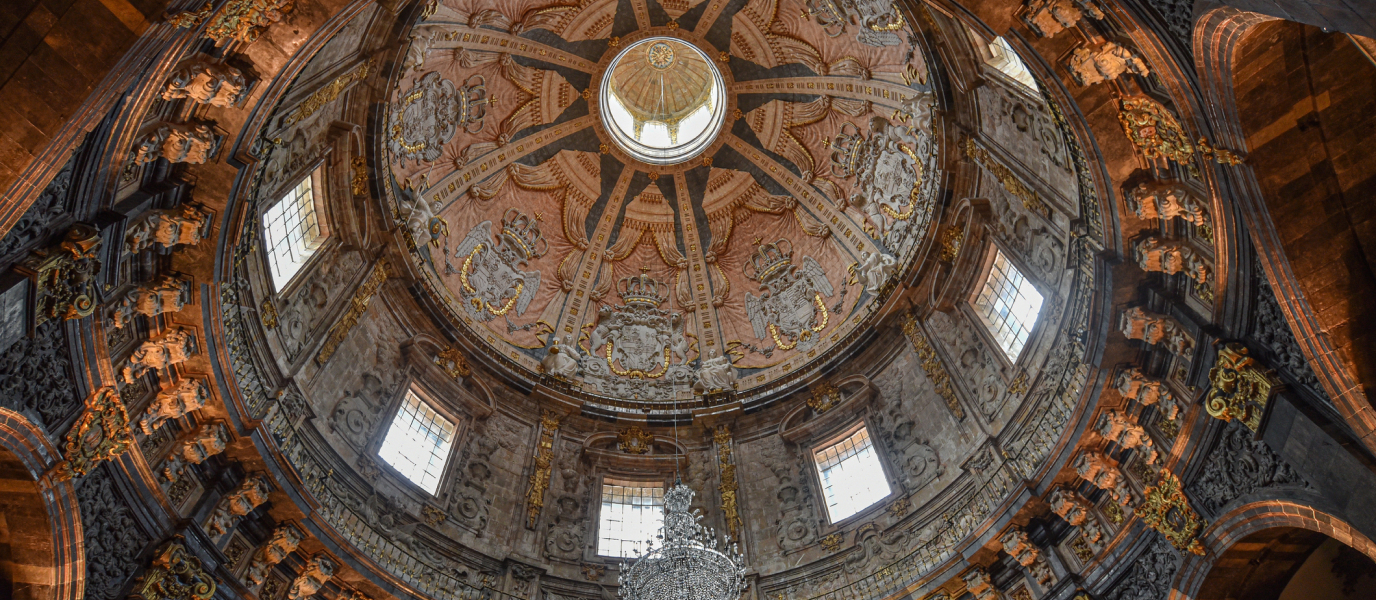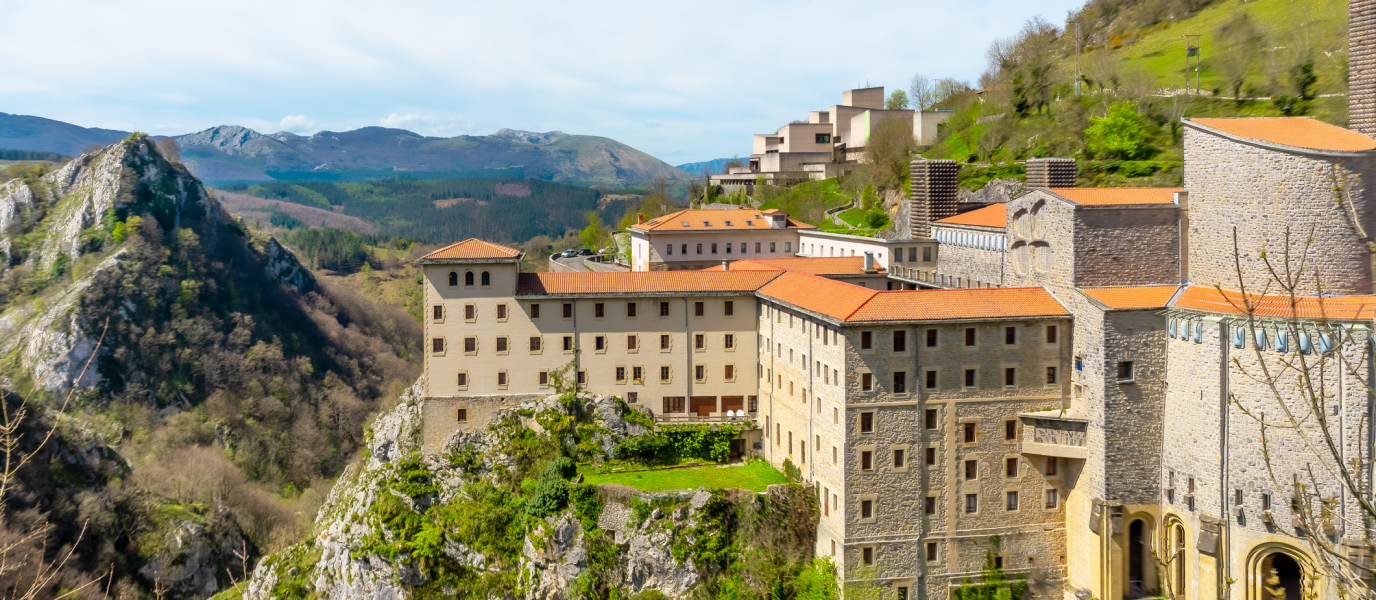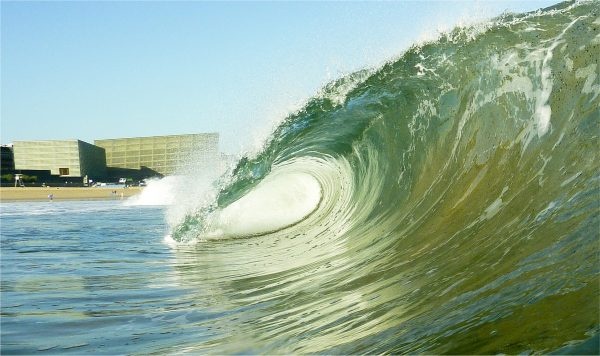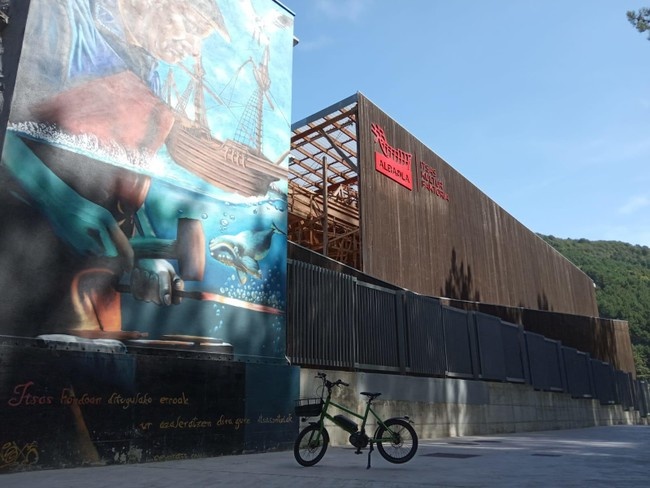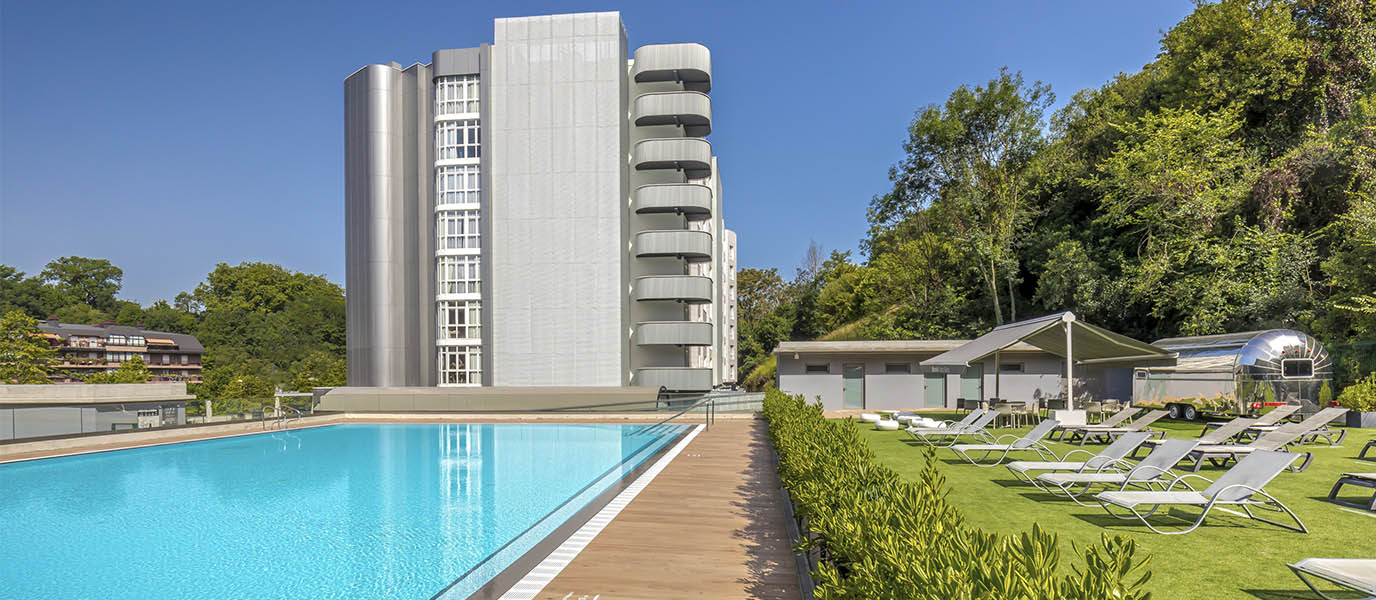The Basque city of San Sebastián (Donostia in Basque) has several affectionate nicknames. Perhaps the most interesting is La Bella Easo, stemming from the old belief that the ancient Roman town of Oiasso (or Easo, in its Hispanicised version) was built where San Sebastián now stands. Though records now point to Oiasso being located in the present-day town of Irun, the nickname stuck. The roots of San Sebastián date back not to Rome but to 12th-century Spain, when the hub was the old town or Parte Vieja until the city walls were pulled down in the 19th century.
A historical trip through the Parte Vieja in San Sebastián
The old town is part of the wider Centro district and is delimited by the same boundaries marked by the early walled settlement. The Parte Vieja sits at the foot of Monte Urgull, with the port on one side and the Urumea River on the other. The current layout of the Parte Vieja is from the 19th century, though you can still see some of the old city wall, particularly near the port.
The city was practically destroyed during the Siege of San Sebastián in the Spanish War of Independence. Set ablaze and plundered, only the most important religious buildings survived: the Basílica de Santa María del Coro, the Iglesia de San Vicente and the Convento de San Telmo. It took more than 30 years to rebuild the city. During that time the walls were pulled down and the current layout of the Parte Vieja took shape.
Must-see attractions in San Sebastián’s Parte Vieja
The entire old town is pedestrianised – don some comfy shoes and get set for a walking adventure around San Sebastián’s charming Parte Vieja.
- Plaza de la Constitución. This is the beating heart of the old town. Until the 1940s the Town Hall building was located here, and the balconies looking down onto the plaza still bear the numbers from its past as a bullring. With its colourful houses and lively atmosphere, this is one of San Sebastián’s most famous plazas and the main venue for local fiestas, including the celebratory drum festival called the Tamborrada.
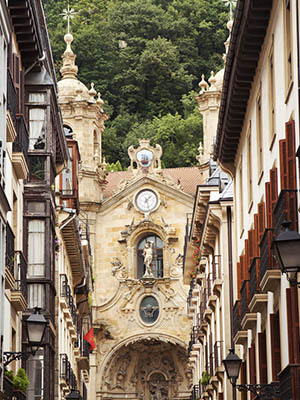
- Iglesia de San Vicente. This is one of the oldest churches in San Sebastián, dating back to the first half of the 16th Gaze at the beautiful Gothic exterior before venturing inside to admire the sublime Romanesque altarpiece created by Ambrosio de Bengoechea and Juan de Iriarte. Stop to take in the stained-glass windows, and note the contemporary twist added by the sculpture titled Piedad (Pity), created by Jorge Oteiza.
- Basílica de Santa María del Coro. One of the most striking features of this building – a combination of Gothic, Churrigueresque and Neoclassical architecture – is its Baroque facade. The basilica sits in perfect alignment with another of the town’s stunning religious buildings: the Catedral del Buen Pastor.
- San Telmo Museum. This museum is housed within the 16th-century Convento de San Telmo. The building has since been extended and constitutes a wonderful example of how past and present can come together within one space. The new annex building sits in perfect harmony with the original convent and with its environment at the foot of Monte Urgull. The museum has a collection of fine art as well as an ethnographic collection preserving the memory of Basque society.
- Monte Urgull. From Plaza Zuloaga (the location of the Museo de San Telmo) you can pick one of the four paths providing access to Monte Urgull. Now one of San Sebastián’s most beloved green spaces, in days gone by it was a strategic vantage point for defending the town throughout the centuries. Climb to the Castillo de la Mota at the top to enjoy some breathtaking panoramic views.
The Parte Vieja is separated from the rest of the town by the pretty tree-lined Boulevard. It’s a popular place to hang out and a main artery for most of the local buses. From there, take a stroll past the Teatro Victoria Eugenia (next to the Kursaal bridge) or even to La Concha Bay and the Town Hall.
Pintxo bars in central San Sebastián
If you’re looking to sample some authentic local cuisine, look no further than the Parte Vieja. This is one of your best bets if you want to head out for pintxos, and has some of the most classic bars in town. San Sebastián is a foodie’s paradise – the possibilities are endless and it’s worth doing a crawl around a few different bars.
This is a town where pintxos have become an art in their own right; a form of miniature haute cuisine. Check out bar Zeruko and try their famous La Hoguera pintxo, made with smoked cod. Borda Berri serves a range of delicious rice-based pintxos. Stop in at La Cuchara de San Telmo to try the fabulous cannelloni. If traditional pintxos are more your thing, Gambara is among the best. For a more sophisticated experience, try A Fuego Negro. For the finishing touch to your packed day in the Parte Vieja, don’t forget a trip to La Viña for some exquisite cheesecake.




































































